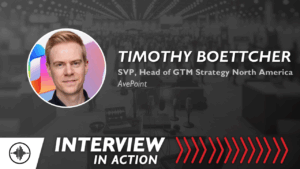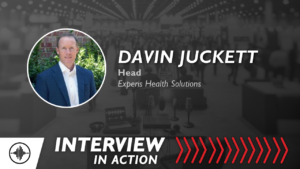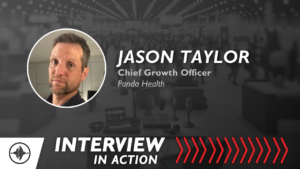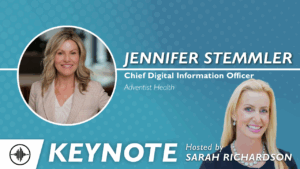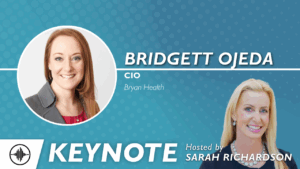By leveraging a purpose-built two-sided platform, healthcare will finally have the technology fix to address the root of the PA problem.
The need to fix healthcare’s antiquated prior authorization (PA) process remains a hot-button issue in the industry, garnering policy attention and spurring the development of myriad technology solutions aimed at upending some part of the wildly inefficient, burdensome process. Unfortunately, today’s existing technology “fixes” and regulatory efforts are an insufficient drop in a very deep bucket – one that can only be filled with an entirely new solution.
getty
Only by creating a dedicated health information network for PA – similar to the way a national network was built for e-prescribing – can the healthcare industry hope to fix the deficient PA process and address what’s really at the root of all PA problems: a lack of visibility/transparency and a lack of trust.
PA is generally demonized by physicians and patients alike, seen as an unnecessary layer of administrative oversight that undermines a physician’s clinical judgment and keeps patients from getting timely care. Payers, on the other hand, view PA as their primary mechanism for managing costs and reducing low-value or inappropriate care upstream.
Unsurprisingly, many providers feel PA is doing more harm than good. Nearly all – 89% – provider respondents to a 2021 American Medical Association survey said PA had a somewhat or significantly negative impact on clinical outcomes, where 86% of physicians reported that PA leads to ineffective initial treatments (step therapy) or additional office visits.
Importantly, neither payers nor providers are wrong in their views. But, it’s important to recognize that the root of the PA problem stems from the complete lack of trust between payers and providers and the fractured nature of the healthcare delivery system.
Payers don’t trust that providers are making optimal, appropriate, high-value care decisions, mainly because payers have no visibility into the care process or into why certain decisions are being made.
These concerns aren’t unfounded. A 2011 study from the American Clinical and Climatological Association projected that the amount of medical knowledge would double every 73 days by 2020, making it impossible for physicians to stay on top of new findings, innovative care options or changes to medical guidelines. According to a 2022 Journal of Internal Medicine study, primary care providers would have to practice medicine for nearly 27 hours per day to keep up with the latest guidelines. There is also a high-degree of care variability that exists from institution to institution, and physician to physician.
On top of the challenges that come with being a human being that can only ingest so much information at a time, providers simply don’t trust that payers are putting the needs of patients above plan profits. Many providers see plans as nothing more than money-hungry bureaucrats, wielding their hammer of “no” through PA, and creating unnecessary administrative obstacles that pull clinicians away from clinical workflows and keep patients from getting care in a timely manner.
Benjamin Schwartz, a practicing orthopedic surgeon in the Greater Boston area, recently penned his thoughts about the two-sided PA coin, noting that, “As much as docs universally despise UM/PA, the reality is that there is another side to the coin — low value care exists to a bigger degree than we docs might like to admit. There are a multitude of reasons why, but to deny this is disingenuous.”
Schwartz goes on to say that while he doesn’t believe PA is the best way for payers to manage low value care – “the collateral damage is too high” – he’s not sure what the fix to the problem is. “Maybe it's gold cards. Maybe it's some form of (gulp) value-based care. Probably it's something else entirely.”
Proposed Standards May Miss The Boat
While gold carding and value-based care may help improve certain aspects of PA processing, Schwartz’ inkling is right. The industry does need “something else entirely” in order to improve PA at scale – especially as some of the latest tech-focused policy proposals are causing confusion, and even bringing the two typically at-odds sides together to express their concern.
In a letter to the Centers for Medicare and Medicaid Services (CMS) in July, the American Hospital Association (AHA), American Medical Association (AMA), the Alliance for Health Insurance Plans (AHIP) and the Blue Cross Blue Shield Association wrote that two proposed rules, each focused on information exchange standards, were at odds with each other and would cause more than just confusion if passed.
Introduced in December 2022, the Administrative Simplification rule and the Interoperability and Prior Authorization rule, if finalized, would “set the stage for multiple [prior authorization] electronic standards and workflows and create the very same costly burdens that administrative simplification seeks to alleviate,” the letter stated.
On top of these contradictions, the information exchange standards don’t do anything to address the incredible variation and variety of the information being exchanged, or take into account how data will have very different meaning/context for providers as opposed to payers.
Joe Anstine
“EHRs have created a business that allows providers to customize workflows, with a high degree of customization and fragmentation,” says Joe Anstine from Rhyme, a technology platform that integrates and normalizes data from provider EHR systems and payer case management systems to enable the exchange and decision of prior authorization in real-time.
The incredible variation in EHR data effectively blocks it from flowing out to payers, says Anstine, on top of the issue that these data have very little meaning or context for payers on the receiving end. Neither of these problems are issues that the proposed standards consider, let alone address. “Until we solve the data clog and interpretation problems, we’re going to see very little progress.”
Innovation Is Happening, Kinda
Ill-equipped data exchange standards aside, innovation in the PA space is happening, with many solutions providers embracing AI as the PA fix.
According to a McKinsey analysis, AI-enabled prior authorizations can automate up to 75% of manual tasks. This potential is why many tech companies, including giants like Google, Microsoft, and IBM, are betting big on generative AI solutions to improve efficiency and reduce the time and cost burden of manual PA processing for providers and payers.
Announced at the company’s latest user group meeting (UGM), Epic is deepening its partnership with Microsoft to accelerate generative AI-powered 'copilot' tools to help clinicians save time on PA requests. Speaking to UGM attendees, Microsoft CEO Satya Nadella described generative AI as the result of "two breakthroughs" that happened simultaneously — natural language capabilities and a reasoning engine to gain insights from data.
Ryan Nellies
At Premier, one of the country’s largest group purchasing organizations representing more than 4,400 hospitals and health systems, addressing the burden of prior authorization is a priority. The company in 2018 acquired Stanson Health, a technology company providing clinical decision support tools that are integrated into providers’ EHR systems. As Stanson Health’s Ryan Nellis explains, “Prior authorization is clinical decision support. It’s a set of rules, based on evidence. It’s just frustrating because it happens after the fact, and makes everybody [providers and patients] wait until it’s resolved.”
Nellis touts the company’s novel approach, in which it ingests prior authorization rules from partnered health plans and applies those rules within a provider’s EHR workflow, as a key reason the company has seen its technology deployed to more than 1,000 hospitals.
Lisa Davis
Health plans, for their part, are also embracing AI capabilities to improve PA processing. Blue Shield of California’s pilot program with Google Cloud, for example, is leveraging AI and machine learning technologies to help expedite the PA process. But as Lisa Davis, senior vice president and chief information officer at Blue Shield of California, noted, “There will always be a need for humans. Artificial Intelligence will never be the be-all end-all” said Davis. “It is an enabler. It's a tool. You have to have people involved in the system that provide that oversight and quality of care.”
As with all things shiny and new in healthcare, especially when introducing automation to care decision-making, the industry must proceed with caution. Take the class action lawsuit brought against health insurer Cigna in July, which alleges Cigna’s PA screening algorithm was developed “to systematically, wrongfully, and automatically deny” its members of a physician’s review of PA requests as “guaranteed to them by California law.”
The issue this suit raises, as the AMA detailed, is whether the technology in use is in compliance with the state and federal insurance regulations that govern payer decision-making on whether to approve claims or prior-authorization requests.
Perhaps the most important takeaway is automation and efficiency can’t come at the expense of someone’s health, and AI solutions are by no means a silver bullet for PA transformation.
Fixing PA Will Require Something Else Entirely: A Network Effects-Driven Platform
Neither information exchange nor AI will fix what ails today’s PA problem. Technical standards will help, but are not sufficient, as they leave a “many to many” inefficiency problem requiring every EHR system to connect and maintain integrations with every health plan system, and vice versa. And AI solutions deployed to improve the efficiency for providers or health plans miss a critical point: prior authorization is by nature a two-sided (not one-sided) communication challenge.
What the healthcare industry needs is a two-sided network platform business. Rather than selling technology or AI solutions to either side, the platform would work with existing technology systems on both sides to “talk” to each other. Reliant on network effects to create value, the platform’s primary job and business model would motivate it to facilitate connections and successful transactions between the thousands of different provider and payer end points, on one single network, and support those interactions in a way that creates value for all.
By utilizing a centralized health information network for PA, the healthcare industry would benefit from:
- Bringing the necessary technology and technical support, and oversight to the process;
- Engendering trust and transparency in support of better collaboration.
- A network operator that is incentivized to optimize the process and make sure all participants realize value
- Making the PA process more efficient, less time consuming, and more transparent for all parties involved.
A PA network could address the data variation issues between systems (provider and plan) that tend to doom PA requests from the start, while providing the tech support and oversight needed to optimize the process. Given that a platform business relies on network effects, PA network would also be incentivized to make sure the process is not only working well, but also delivering value to participants.
Having a network operator provides a layer of quality control and oversight, and even reporting capabilities to improve visibility into transaction efficiency and stakeholder responsiveness.
Surescripts, the nation’s largest health information network, presents an example of the power of such a dedicated network platform. The company provides both the technical infrastructure that serves as the information highway as well as the oversight, standards enforcement, quality control, governance and network support to ensure e-prescribing transactions are optimized — and that all participants using the network – providers, payers and PBMs – find value. The e-prescribing ecosystem powered by Surescripts now processes 90% of ambulatory prescriptions, and researchers estimate that e-prescribing has saved billions of dollars.
If Surescripts and e-prescribing are an example of the promise of what a PA network platform can do for the industry, it’s worth noting some of the similarities (and differences) between e-prescribing and prior authorization. Surescripts was founded in 2001 by industry participants, and benefitted from multiple federal incentive programs promoting physician adoption of e-prescribing. The company also leveraged existing technical standards, and worked collaboratively with pharmacies, PBMs and EHR systems to develop “rules of the road” in order to build trust in the system.
For prior authorization, there is no organization that was founded by health plans and providers to build a PA network platform. There are no federal incentives that have been proposed to drive adoption of electronic prior authorization, nor are there mature, widely used transactions. And getting providers and health plans to collaborate to build trust on this issue is a tall order.
A reason for optimism may be the immense pressure building as a result of frustrated patients, increased media attention on the problems, and legislative and regulatory scrutiny on prior authorizations. Referring to the impending confluence of these events, Rhyme’s Anstine notes “there’s a window of time for plans and providers to come together to solve this.”
For companies such as Rhyme, Stanson Health and others, the goal is to utilize platform business thinking to bring providers, health plans, and their systems together to improve the PA process. If they are successful in building real-time communication capabilities between providers and payers, perhaps that can begin to shift the often adversarial relationship between plans and providers.
Stanson Health is seeing green shoots, as the company now processes more than 2 million PA requests per year. As is Medical Mutual of Ohio, a health plan that recently began working with Rhyme. Christian Corzine, Vice President of Clinical Quality Health Services at Medical Mutual notes that its partnership with Rhyme helps “better aligns partners and payers in service of the member (patient).”
At the end of the day, both sides can agree their efforts are in service of the patient. Hopefully platform thinking will help both do so, while building trust as part of the process.

